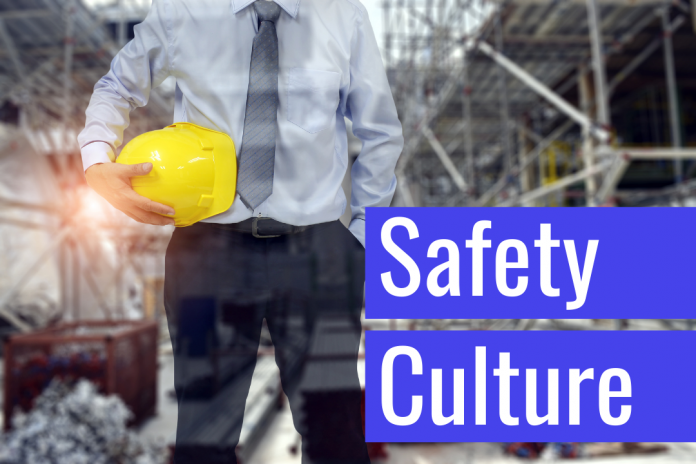
“Workplace culture” has been a buzzword for several years now, with many corporations touting their culture as a benefit of working for them. More recently, however, “safety culture” has been popping up as its own trendy term—and with good reason.
Safety culture is what an organization believes and does in the pursuit of safety. According to OSHA, employees tend to demonstrate increased adherence to set safety procedures when they feel their company has a strong safety culture.
While creating this culture doesn’t happen overnight, there are a few elements that play a key role in building an effective safety culture, and they are important to implement, no matter your industry or company size.
Key Element #1: Involve Every Employee
Lead from the top: In order for workplace safety to be truly effective, both education and implementation need to start at the top. It may sound obvious, but keep in mind that employees are more likely to follow all the proper procedures if management and those in safety positions lead by example.
This also helps when it comes to getting new employees up to speed. An introduction to safety procedures is likely part of your onboarding process, but if new hires see top leadership and more tenured coworkers disregarding those procedures, they may be inclined to not take what they just learned as seriously as they would otherwise.
Have safety conversations to understand the “why”: When employees start taking safety shortcuts, they typically don’t intend to engage in unsafe behaviors. Most of the time, they are simply trying to make things easier for themselves.
For instance, one employee may use a chair to reach a high shelf simply because the proper ladder is stored in a closet that is not quickly accessible. Other employees notice how well that works and begin following suit, and suddenly using the chair as a step stool is the “standard” procedure.

Instead of reprimanding all the employees trying to make their jobs easier, you should have an open conversation to find out why the shortcut is being taken and implement a solution. In the chair example above, that solution may involve moving the ladder to where it is more easily accessible, or putting items from that high shelf in a lower location.
Key Element #2: Know Where You Stand
Conduct a job hazard analysis: OSHA makes it clear that employers are required to “provide a workplace free from serious recognized hazards” for all employees. Therefore, it is vital you understand what these potential hazards are in your workplace.
Depending on your industry and your specific jobsite, there could be any number of different hazards present, including electrical equipment, dangerous goods, or heavy machinery.
Conducting a job hazard analysis (JHA) will help you understand the most hazardous jobs in your workplace, what those specific hazards entail, and corrective and preventive measures you can take to reduce or completely eliminate the likelihood of accidents, injuries, and illnesses.
Track safety metrics: When you think of safety metrics, you likely think of things such as on-site injuries. While that is, of course, an important statistic to know, tracking safety metrics can help any company make decisions related to the health and safety of its employees.

There are many basic measures of safety that are useful both for serving as a baseline to start tracking information, as well as to measure against as your safety program evolves and improves.
As noted above, there are some important metrics used to evaluate overall safety, known as “lagging indicators,” which include things such as incidents or lost workdays. However, there are also useful “leading indicators” that track items such as workplace inspections and employee training.
The specific safety metrics that should be tracked will vary from company to company, and they also may change over time. What is important is that you make yourself aware of where your safety program is lacking and find the metrics that will help you fill those gaps.
Key Element #3: Create Accountability
Empower employees: Even when employers do all they can to set up their workplaces for safety success, it is up to the employees to make sure safe habits are being carried out. After all, the employees are involved in the day-to-day operations, so they are much more likely to be the first to see potential issues.
One way you can empower your employees is to implement a Stop Work Authority (SWA). Such a policy makes it possible for a competent, trained employee to identify a situation that is unsafe or where there is imminent danger and allows workers to manage their own safety in real time, without waiting for managerial approval.
Employees also should be encouraged to conduct regular safety checks of their own areas to ensure standards are being met by every worker. By putting this power into the hands of the employees rather than only people in management, you will foster a culture of safety from the ground up.
Use mistakes as an opportunity: While safety often can be seen as being an “all or nothing” situation, it is important to understand that we are all human and we all make mistakes. When this happens regarding safety procedures, the employee in question shouldn’t be punished, as it can lead to a variety of negative outcomes.
Instead, turn that mistake into an opportunity for teaching, but not in a way that isolates the employee and puts their behavior front and center. Take note of what happened and use that as an example—for all employees—of a real-life situation and solution.
Identifying mistakes or safety errors is another good time for a safety conversation and can be used to spark discussions surrounding procedures. Perhaps an employee repeatedly forgetting an important safety step highlights a way that things can be done differently. Use this time to collaborate with employees and find the best solution.
Have an easy reporting process: Ask any Human Resources professional and they likely will tell you: Getting employees to report unwanted behaviors is hard, whether it is due to a fear of retaliation or simply not knowing the proper reporting channels.
When it comes to the health and safety of your employees, it is crucial that everyone feels empowered to easily reportsomething they see. After all, they are the ones who are best equipped to identify when something is wrong.
While reporting a potential safety violation directly to a superior is ideal, not everyone is comfortable doing so. It is important to create alternative systems, such as an online form, a specific e-mail address, a custom hotline, or a reporting box in a shared space, that will work for your team.
Additionally, the company’s code of conduct should state that there will be no retaliation for these types of reports—and this must be fully enforced. Whenever possible, allow reports to be submitted anonymously to help further enforce the anti-retaliation policy.
Key Element #4: Offer Complete Training
Effective training courses: Conducting employee training is one of the most important things any organization can do. New employees need to be trained on processes and procedures that may be unfamiliar to them, while all employees must stay up to date on regulations.
As any corporate trainer can tell you, even before the COVID-19 pandemic introduced social distancing and widespread working from home, gone are the days of packing large groups of employees into a conference room to sit through a day full of long, monotonous training presentations.
However, it is crucial that you offer training courses that are effective. After all, if the employees don’t learn and retain any of the information, was it even worth taking the training? Be sure you do your research and only utilize training provided by a respected, reputable service.
Toolbox talks for continued reinforcement: Depending on your industry, you may already be familiar with the concept of a toolbox talk (note that people may refer to such talks with a variety of different names, such as tailgate briefings, tailgate meetings, safety moments, or safety talks).
While there are numerous benefits of holding toolbox talks, a major one is that they help keep safety a regular focus. Think about the last time you took a training course. It’s likely that for the next few days, you were more aware of the particular hazards mentioned. Toolbox talks keep those things top of mind.
A short, engaging toolbox talk is more likely to have a lasting effect, so a team member might later mention one of the talking points to a coworker. Plus, when safety is presented to workers every day, it is more likely that safe habits will be formed and, in the long run, make a lasting impact on the organization’s safety record.
Changes to Safety Culture Following COVID-19
On March 11, 2020, the World Health Organization declared the rapid spread of the SARS-CoV-2 virus, commonly known as COVID-19 or Coronavirus, as a pandemic. Each state determined a level of action to be taken in an effort to slow the spread of the virus, from issuing full stay-at-home orders to choosing only to close schools and allowing businesses to close if they desired.
Since early 2021, the United States has seen great declines in the number of new cases of COVID-19, but the experience of a sudden pandemic is likely to have an effect on how both individuals and companies approach safety going forward.
Here are a few things that could be helpful to implement within your organization to help keep people feeling, and staying, safe:
Encourage employees to continue safe habits. There are some safety measures that began being heavily implemented during the pandemic that still make good logical sense to continue. These things include frequent hand washing, sneezing or coughing into a tissue, and even social distancing, when possible.
Many employers introduced hand-washing stations or placed hand sanitizer dispensers throughout their workplaces, and it wouldn’t hurt to continue that practice. While the spread of COVID-19 has slowed, these habits also can help keep the more common colds and flus at bay.
Revisit your company culture. Of course, safety culture is incredibly important, but overall company culture is often what keeps people at a certain company. After the pandemic, you may need to take a look at your own company culture to make some appropriate changes.
Whether you decide to celebrate a return to the worksite if you previously had employees working from home or want to do something as simple as show appreciation for employees who practice safe habits, letting your employees know you value them, especially in these continued uncertain times, will help strengthen any company culture.
Keep mental health in mind. Roughly 10 percent of the U.S. population contracted the COVID-19 virus, and millions more were affected in financial ways. Even if you were lucky enough to not be personally affected, it is likely you knew people who were. That alone can be taxing on anyone’s mental health.
Mental health in the workplace has become more of a hot topic in recent years, and it is only gaining traction. It is important for employers to always be considerate, especially in these trying times as restrictions continue being lifted and more workers return to their jobs.
Bottom Line: Do What Works For You
While the four key elements noted above serve as a solid foundation for building, or improving, a successful safety culture, the specifics that best serve each organization will differ.
Overall, however, as long as you involve your employees in safety procedures, understand your company’s safety metrics, allow all employees to feel— and truly be—empowered, and ensure everyone is fully trained, you will be well on your way to creating a culture of safety that is perfect for your needs.
Contact SafetySkills today to see how you can get started improving your company in all these areas. With more than 20 years of experience creating immersive, effective safety training content, SafetySkills understands what it takes to create a strong safety culture.




